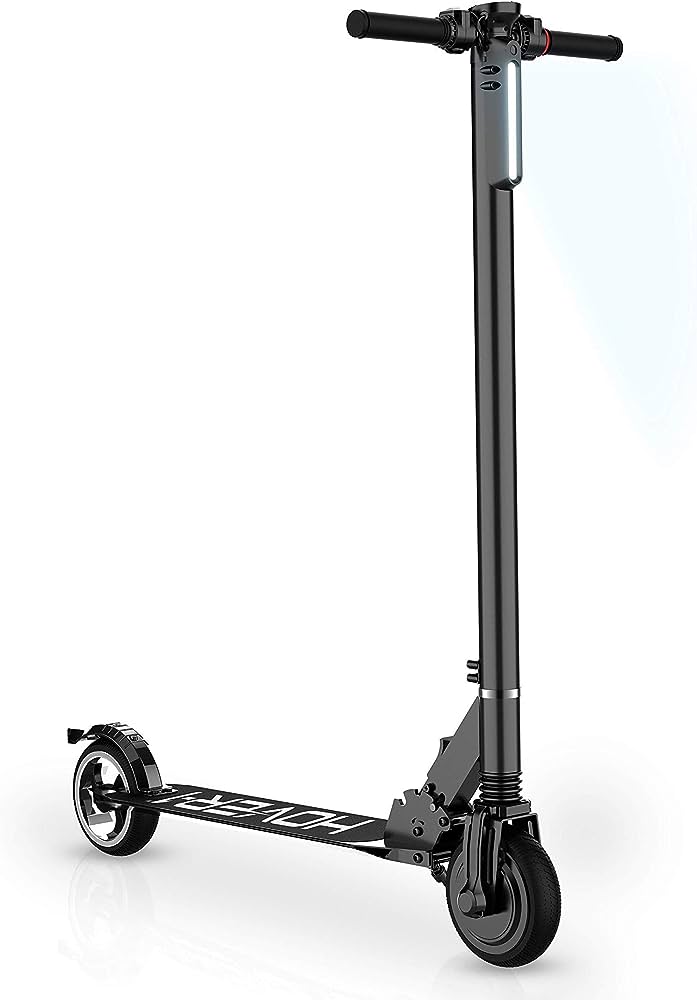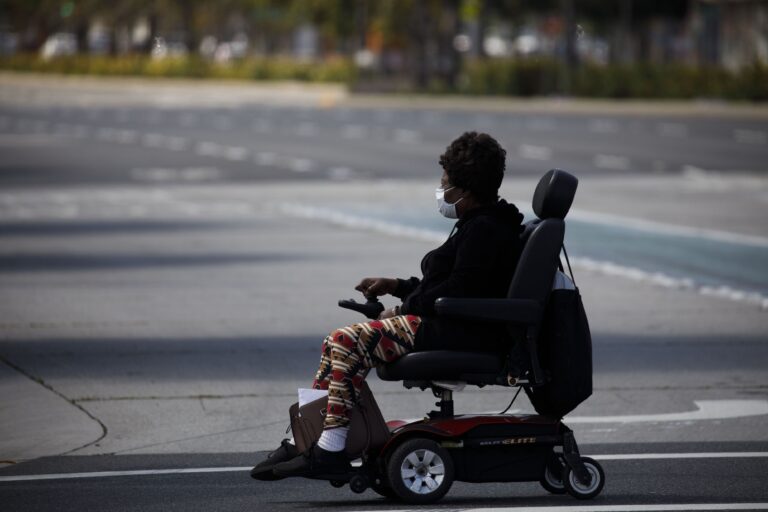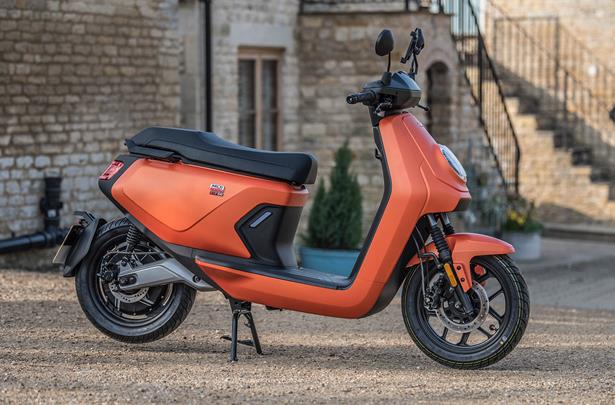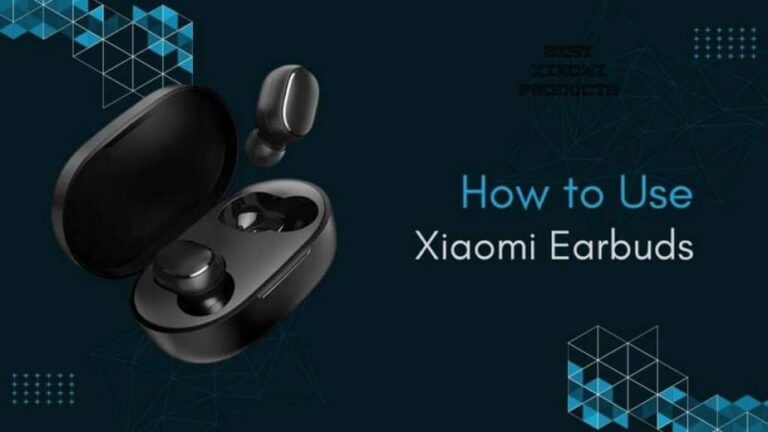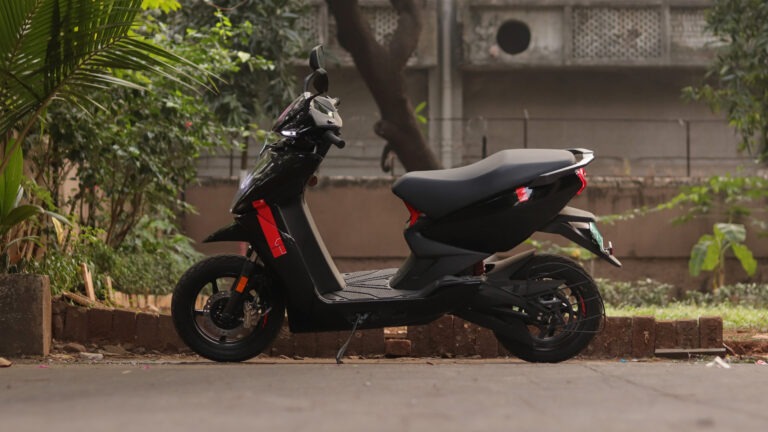Glion Scooter Not Charging : Troubleshooting Tricks to Get You Back on the Road
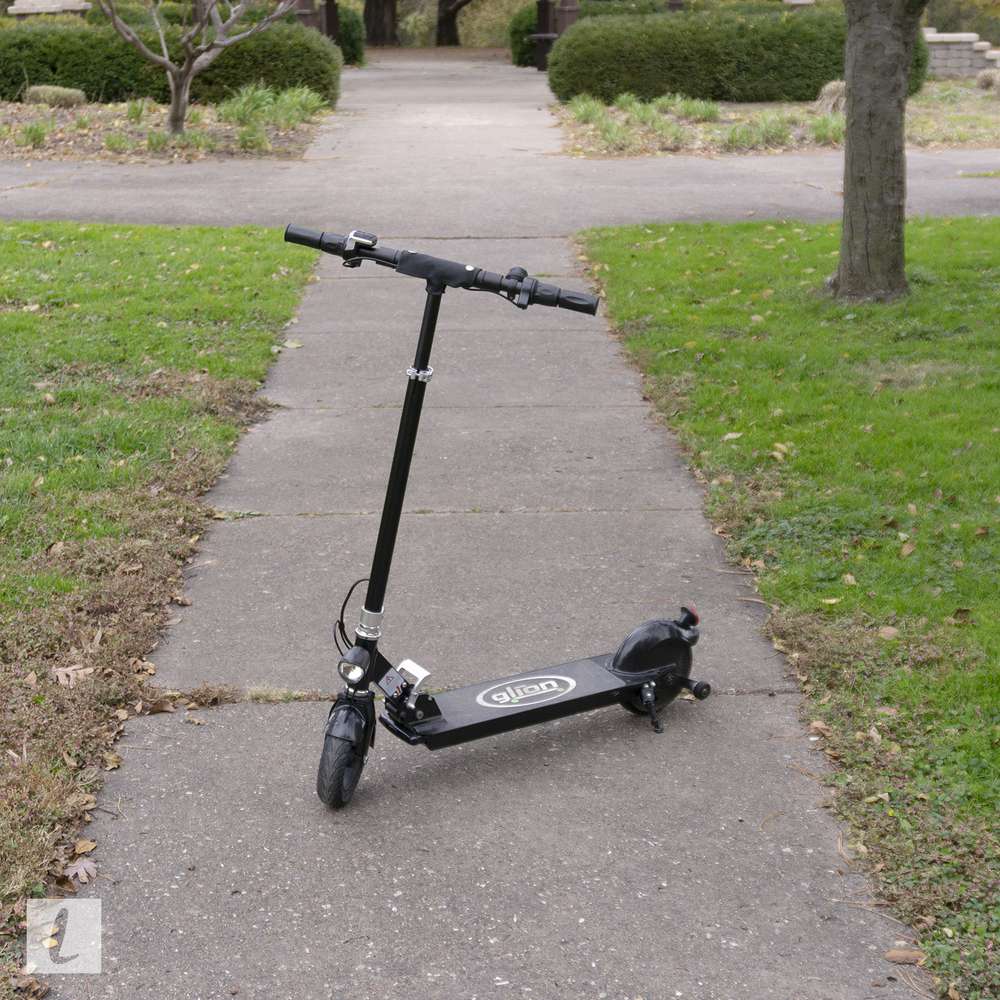
If your Glion scooter is not charging, there are a few potential issues to consider. First, check that the power cord is securely plugged into both the scooter and the outlet.
Next, examine the battery to ensure it is properly connected and not damaged or depleted. If the battery appears to be fine, try resetting the scooter by turning it off and on again. If these troubleshooting steps do not resolve the issue, it may be necessary to contact Glion customer support for further assistance.
Electric scooters have surged in popularity as a convenient and environmentally friendly mode of transportation. Glion scooters, known for their sleek design and reliable performance, offer users a convenient and efficient way to zip around town. However, like any electronic device, Glion scooters may encounter the occasional hiccup, such as a charging issue. If you find that your Glion scooter isn’t charging, it can be frustrating and hinder your ability to use it. We will explore some possible causes for a Glion scooter not charging and offer practical solutions to get your scooter back up and running. By following these steps, you can quickly diagnose and resolve the problem, so you can continue enjoying the benefits of your Glion scooter.
Understanding The Charging System
Having trouble with your Glion Scooter not charging? Understanding the charging system is crucial for troubleshooting. Check connections, inspect the battery, and ensure proper charging procedures to get your scooter powered up again.
Having a functioning charging system is crucial for the proper operation of your Glion scooter. In this section, we will delve into the importance of a functioning charging system, the components involved, and how the charging process works.
Importance Of A Functioning Charging System
A properly functioning charging system is vital to ensure that your Glion scooter is always ready to hit the road. Here are some reasons why a functioning charging system is important:
- Reliable power source: A functioning charging system provides a reliable power source to keep your scooter running smoothly. It ensures that the battery is charged, allowing you to travel longer distances without any interruption.
- Extends battery life: A well-maintained charging system helps extend the lifespan of your scooter’s battery. By following the correct charging procedures, you can avoid overcharging or undercharging, which can negatively impact the battery’s performance and longevity.
- Convenience: A fully charged scooter is ready to go whenever you are. With a functioning charging system, you can easily recharge your scooter’s battery at your convenience, ensuring that it’s always ready for your next adventure.
Components Of The Glion Scooter’S Charging System
To better understand how the charging system works, let’s take a look at its key components:
- Battery: The battery is the primary component of the charging system. It stores electrical energy that powers the scooter. Glion scooters typically use lithium-ion batteries, known for their high energy density and longer lifespan.
- Charger: The charger is responsible for converting AC power from a standard electrical outlet into DC power suitable for charging the scooter’s battery. It regulates the voltage and current to ensure safe and efficient charging.
- Charging port: The charging port is where you connect the charger to the scooter. It serves as a point of entry for the electrical energy from the charger to reach the battery.
- Charging indicator: Most Glion scooters have a charging indicator, usually an LED light, to show the charging status. It lets you know when the battery is fully charged or still in the process of charging.
How The Charging Process Works
Now, let’s explore how the charging process works in a Glion scooter:
- Connect the charger: Plug the charger into a standard electrical outlet and connect it to the charging port on the scooter. Ensure that the connection is secure.
- Charging initiated: Once the charger is connected, the charging process begins. The charger converts the AC power from the electrical outlet into DC power and directs it to the battery.
- Charging indicator: The charging indicator light will typically turn on, indicating that the scooter is charging. The light may have different colors or blinking patterns to indicate the charging status, such as red for charging in progress and green for a fully charged battery.
- Charging completion: Once the battery reaches its full capacity, the charger automatically stops charging. The charging indicator may change color or turn off to indicate that the charging process is complete.
- Disconnect the charger: After the charging process is complete, safely disconnect the charger from the scooter and the electrical outlet.
Understanding the charging system of your Glion scooter is essential to ensure proper maintenance and maximize its performance. By keeping the charging system in optimal condition, you can enjoy long rides with peace of mind, knowing that your scooter’s battery is always charged and ready to go.
Identifying Common Charging Issues
If your Glion scooter is not charging, it could be due to common charging issues. Check the power source, inspect the charger and its connection, and ensure that the battery is functioning properly. Troubleshooting these problems can help get your scooter back up and running.
Glion Scooter Not Charging At All:
- Check the power source: Ensure that the Charger is properly plugged into the wall socket and connected to the scooter.
- Inspect the charging connections: Ensure that the charging port on the scooter is clean and free from any debris or corrosion.
- Replace the charger: If the charger is damaged or not working, consider getting a replacement charger from the manufacturer.
- Check the fuse: Check if the fuse in the charging system is blown. If so, replace the fuse with a new one of the same rating.
- Test the battery: If none of the above steps work, it might be a problem with the battery itself. Consider testing or replacing the battery.
Slow Charging Or Incomplete Charging:
- Verify the charger: Ensure that the charger being used is the correct one for the Glion scooter model.
- Check the power source: Make sure the power source can provide sufficient voltage for charging. Test a different power outlet, or try charging the scooter in a different location.
- Examine the charging connections: Ensure that the charging connectors are securely attached to both the scooter and the charger.
- Battery condition: If the battery is old or has a low capacity, it may take longer to charge fully. Consider replacing the battery if necessary.
- Charging temperature: Extreme hot or cold temperatures can affect battery performance. Try charging the scooter in a moderate temperature environment.
Charging Indicator Not Working Properly:
- Inspect the charging port: Check if there is any debris or damage in the charging port that may interfere with the charging indicator.
- Disconnect and reconnect: Try disconnecting the charger and reconnecting it to see if the indicator starts working again.
- Test with another charger: If the problem persists, test the scooter with a different charger to see if the issue lies with the charger or the scooter itself.
- Contact customer support: If none of the above steps resolve the issue, reaching out to the manufacturer’s customer support for further assistance is recommended.
Troubleshooting Steps For Glion Scooter Not Charging
Having trouble charging your Glion scooter? Try these troubleshooting steps to fix the issue and get your scooter back up and running in no time.
Is your Glion scooter experiencing charging issues? Don’t worry, we’ve got you covered! Follow these simple troubleshooting steps to get your scooter back up and running in no time.
Step 1: Checking Power Source And Connection:
- Ensure that your power source is functioning properly.
- Check if the power outlet you’re using is working by plugging in another device.
- Verify that the charging cable is securely connected to both the power outlet and your Glion scooter.
Step 2: Inspecting The Charging Cable For Damage:
- Examine the charging cable for any visible signs of wear and tear.
- Look out for frayed wires, bent connectors, or any other damage that may be affecting the charging process.
- If you notice any issues, it’s recommended to replace the charging cable with a new one.
Step 3: Verifying The Power Adapter Functionality:
- Confirm that the power adapter is functioning correctly.
- Connect the charging cable to the power adapter and plug it into a power source.
- Check if the power adapter’s LED light is illuminated, indicating that it’s receiving power.
- If the LED light is not on, try using a different power adapter to see if the issue lies with the adapter itself.
Step 4: Examining The Battery For Signs Of Damage:
- Inspect the battery compartment for any physical damage or corrosion.
- Ensure that the battery connectors are securely attached and free from dirt or debris.
- If you notice any damage or corrosion, it may be necessary to replace the battery.
Step 5: Resetting The Scooter’S Charging System:
- Locate the charging port on your Glion scooter.
- Disconnect the charging cable from both the power source and the scooter.
- Wait for a couple of minutes before reconnecting the charging cable.
- Plug the cable back into the power source and connect it to the scooter.
- Once the connection is made, try charging your Glion scooter again.
By following these troubleshooting steps, you can identify and resolve the charging issues with your Glion scooter. If the problem persists, it’s advisable to reach out to Glion customer support for further assistance. Happy scooting!

Credit: getglion.com
Dealing With Specific Charging Problems
Having trouble charging your Glion scooter? This article addresses specific charging problems and provides solutions to help you get your scooter up and running again.
If you’re experiencing charging issues with your Glion scooter, don’t worry, you’re not alone. Many scooter owners face similar problems from time to time. In this section, we’ll delve into common charging problems and provide troubleshooting tips and fixes to help you get your scooter back on track.
How To Troubleshoot A Glion Scooter Not Charging At All:
- Check the power source: Ensure that the power outlet you’re using is functional by plugging in another device or appliance. If it works, move on to the next step.
- Verify the charger connection: Ensure a secure connection between the charger and your scooter’s charging port. Loose connections are a common cause of charging issues.
- Check the charger LED light: If the charger’s LED light is not turning on when plugged in, it indicates a problem with the charger itself. Consider replacing it with a compatible one.
- Examine the charging port: Inspect the charging port on your scooter for any debris, dirt, or damage. Clean it with a soft cloth and ensure it is free from obstructions.
- Battery check: If none of the above steps solves the problem, it may be an issue with the scooter’s battery. Reach out to Glion customer support for further assistance.
How To Fix Slow Charging Or Incomplete Charging:
- Check the charger output: Confirm that you are using the correct charger for your Glion scooter model, as different models have different charging requirements.
- Reduce power consumption: Turn off any unnecessary features on your scooter while charging, such as lights or Bluetooth connectivity, to minimize power consumption and optimize charging speed.
- Optimal charging conditions: Charging your scooter within the recommended temperature range (usually between 50°F and 86°F or 10°C and 30°C) can help improve charging efficiency. Avoid charging in extremely hot or cold environments.
- Extend charging time: If your scooter’s battery is significantly drained, it may take longer to complete a full charge. Allow for ample charging time to ensure the battery reaches maximum capacity.
- Battery replacement: If you consistently experience slow or incomplete charging even after trying the above steps, it may be time to consider replacing your scooter’s battery. Contact Glion customer support for further assistance.
Fixing Issues With The Charging Indicator Lights:
- Interpret the charging indicator lights: Familiarize yourself with the meaning of the different LED light sequences on your Glion scooter. Consult the user manual for a detailed explanation.
- Inspect the LED lights: If the charging indicator lights are not functioning properly, check for loose connections or damage to the wiring. Secure any loose connections or contact Glion customer support for guidance.
- LED flashing patterns: If the LED lights are flashing rapidly or displaying an irregular pattern, it may indicate an issue with the scooter’s charging system. Reach out to Glion customer support for troubleshooting assistance.
- Erratic LED behavior: If the charging indicator lights behave erratically or do not light up at all, it could indicate a problem with the scooter’s control board. In such cases, it is advisable to seek professional assistance.
Remember, understanding the specific charging problem is the first step towards resolving it. By following the troubleshooting steps provided, you can get your Glion scooter charging efficiently and enjoy your rides without interruption.
Preventive Maintenance For A Healthy Charging System
Regular preventive maintenance is essential for ensuring a healthy charging system for your Glion scooter. By following maintenance guidelines, you can avoid issues with the scooter not charging, extending its lifespan and maximizing its performance.
Regular cleaning and maintenance tips for the charging port:
- Keep the charging port clean by regularly wiping away any dirt, dust, or debris that may have accumulated. A dirty charging port can prevent a proper connection and hinder the charging process.
- Use a soft, dry cloth to gently clean the charging port. Avoid using any liquids or cleaning solutions as they can damage the port.
- Inspect the charging cable for any signs of wear or damage. If you notice any frayed wires or other issues, it’s essential to replace the cable to prevent potential charging problems.
Importance of proper battery care and maintenance:
- Avoid overcharging the battery. Once the battery is fully charged, unplug it from the charging port to prevent any damage or excessive strain on the battery.
- Store the battery in a cool and dry place when not in use. Extreme temperatures can impact the battery’s performance and lifespan.
- Regularly check the battery for any signs of damage or corrosion. If you notice any issues, it’s important to address them promptly to prevent further complications.
- Maintain an optimal battery charge level by occasionally discharging the battery completely and then fully recharging it. This practice helps with battery calibration and ensures better overall performance.
Best practices for extending battery life:
- Avoid frequently running the battery to a complete discharge. Instead, aim for frequent partial charges to maximize the battery’s lifespan.
- If you won’t be using the scooter for an extended period, make sure to fully charge the battery before storing it. This helps to prevent the battery from draining completely and potentially experiencing irreversible damage.
- Maintain a regular charging routine to keep the battery in good health. Consistent charging at appropriate intervals will not only extend battery life but also ensure that your scooter is always ready for use.
- Keep the battery away from excessive heat or direct sunlight, as high temperatures can negatively impact its performance.
Remember, implementing preventative maintenance practices for your Glion scooter’s charging system and battery can help ensure a healthy and long-lasting power source, providing you with a reliable and efficient ride every time.
When To Seek Professional Help
If your Glion scooter is not charging, it may be time to seek professional help. Professional technicians can diagnose and fix the issue, ensuring your scooter is back up and running in no time. Don’t waste time trying to fix it yourself – let the experts handle it.
Glion Scooter Not Charging:
If you’ve encountered a charging issue with your Glion scooter and the troubleshooting steps haven’t resolved the problem, it may be time to seek professional help. Complex charging problems may require the expertise of authorized service centers. Additionally, understanding warranty coverage for charging system-related issues is crucial.
Here’s what you need to know:
When Troubleshooting Steps Don’T Resolve The Charging Issue:
- If the scooter’s battery doesn’t charge even after following all the recommended troubleshooting steps, it’s time to consider professional assistance.
- Complex electrical issues may require specialized knowledge and equipment for accurate diagnosis and repair.
- Seeking professional help can save you time and potentially avoid causing further damage to your scooter.
Finding Authorized Service Centers For Diagnosing And Repairing Complex Charging Problems:
- Glion has authorized service centers equipped to handle complex charging system issues.
- These service centers have technicians trained specifically for diagnosing and repairing Glion scooters.
- Contact the Glion customer support team or visit their website to find the nearest authorized service center.
- Make sure to check if the authorized service centers provide support for your specific model.
Understanding Warranty Coverage For Charging System-Related Issues:
- Glion provides warranty coverage for charging system-related issues, but the specifics may vary based on the model and warranty terms.
- Check your scooter’s warranty documentation or contact Glion customer support to understand the coverage for charging system repairs.
- Warranty coverage typically includes manufacturer defects and malfunctions but may not cover damage caused by misuse or unauthorized repairs.
- Understanding the warranty coverage ensures you can make informed decisions about seeking professional help without incurring unnecessary expenses.
Remember, when troubleshooting steps don’t resolve the charging issue, it’s time to consider professional assistance from authorized service centers. They have the expertise to diagnose and repair complex charging problems. Additionally, understanding your scooter’s warranty coverage for charging system-related issues ensures you make informed decisions about seeking professional help.
Get your Glion scooter back on the road with the help of trained technicians and reliable warranty coverage.
Frequently Asked Questions For Glion Scooter Not Charging
How Do I Fix My Electric Scooter Not Charging?
To fix your electric scooter not charging, check the power source, inspect the charging port, cables, and connectors for damage, and try a different charger.
How Do You Reset An Electric Scooter Battery?
To reset an electric scooter battery, follow these steps: 1. Disconnect the battery from the scooter. 2. Let the battery rest for about 10 minutes. 3. Reconnect the battery to the scooter. 4. Charge the battery fully before using it again.
Why Is My Mobility Scooter Battery Not Holding Charge?
Your mobility scooter battery may not hold a charge due to age, overuse, or a faulty charger.
Where Is The Fuse On Electric Scooter?
The fuse on an electric scooter is typically located near the battery or controller for easy access and maintenance.
Conclusion
To conclude, if you are facing issues with your Glion scooter not charging, there are several troubleshooting steps you can take to resolve the problem. Start by checking the power supply and ensuring it is functioning properly. Inspect the charging port for any damage or debris that may be preventing a solid connection.
Consider using a different charger or testing your existing charger with another device to rule out a faulty charger. If all else fails, consulting a professional technician or reaching out to Glion’s customer support can provide further assistance. Remember to always prioritize safety and follow the manufacturer’s guidelines when troubleshooting electrical issues.
With some patience and determination, you can get your Glion scooter up and running again, allowing you to enjoy the freedom and convenience it provides.

